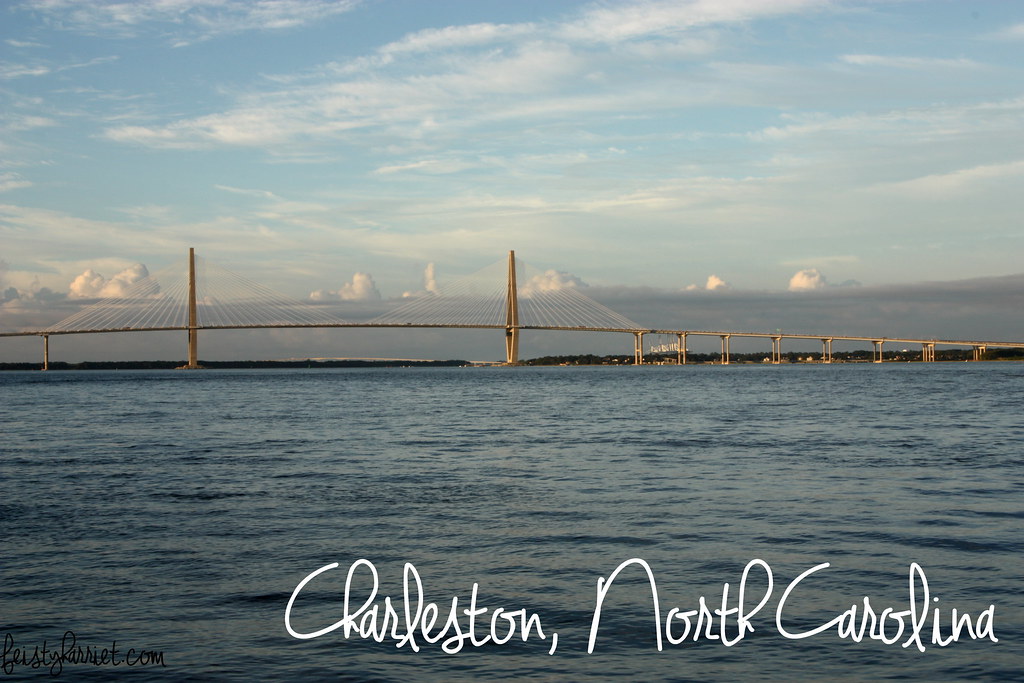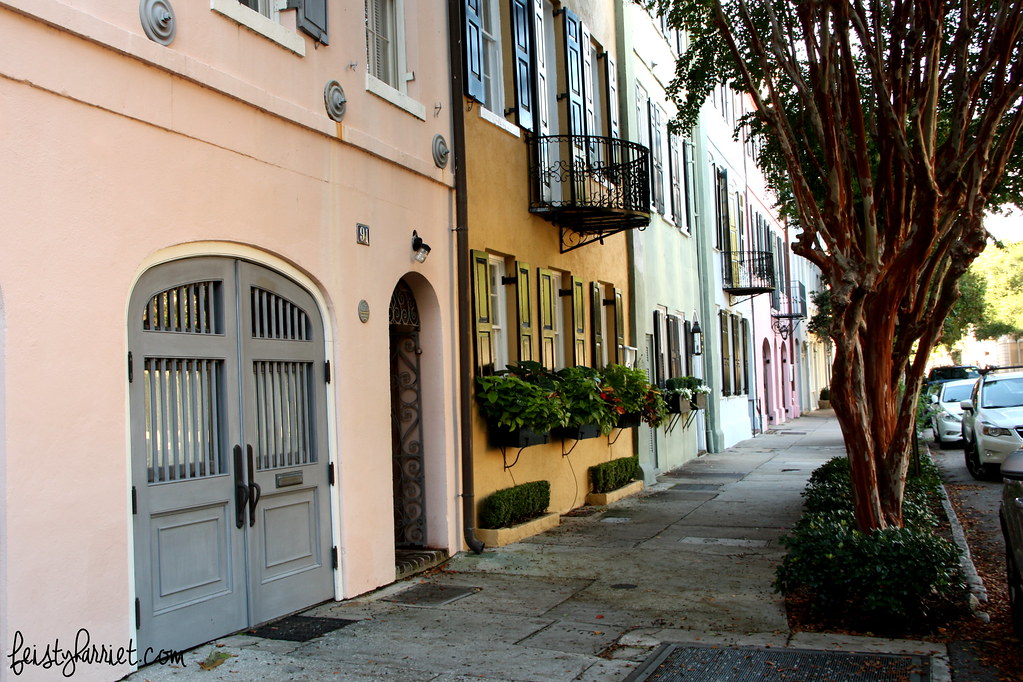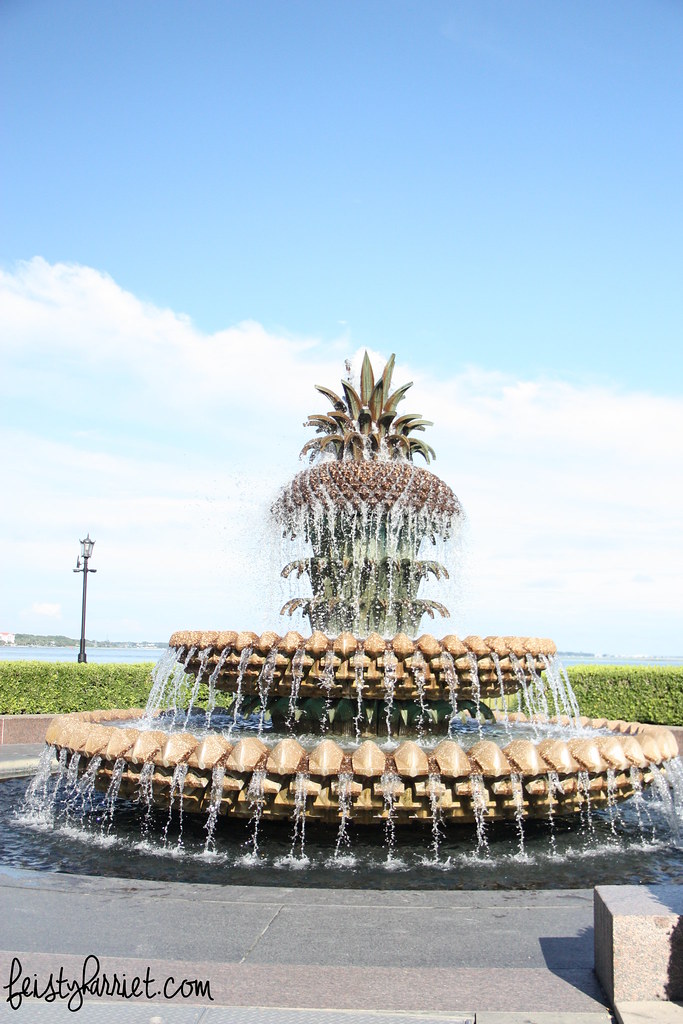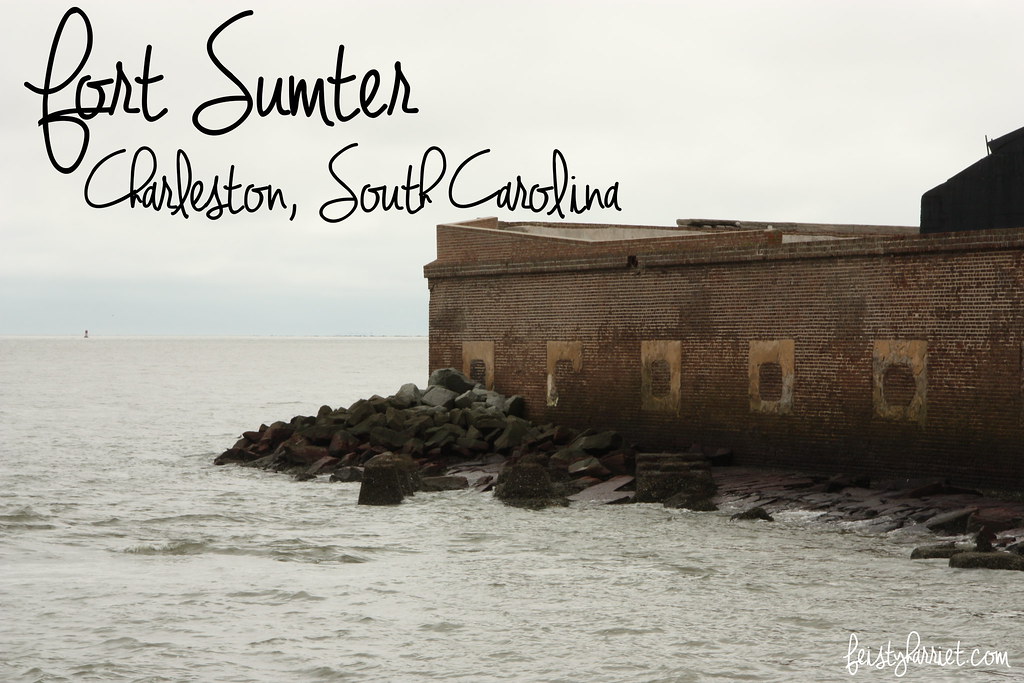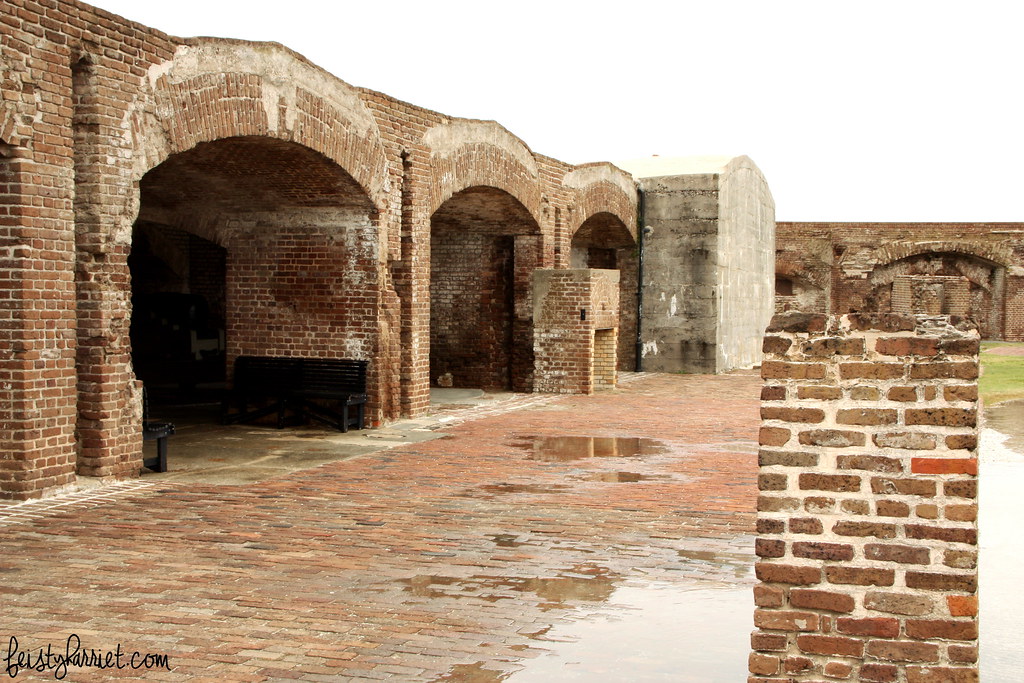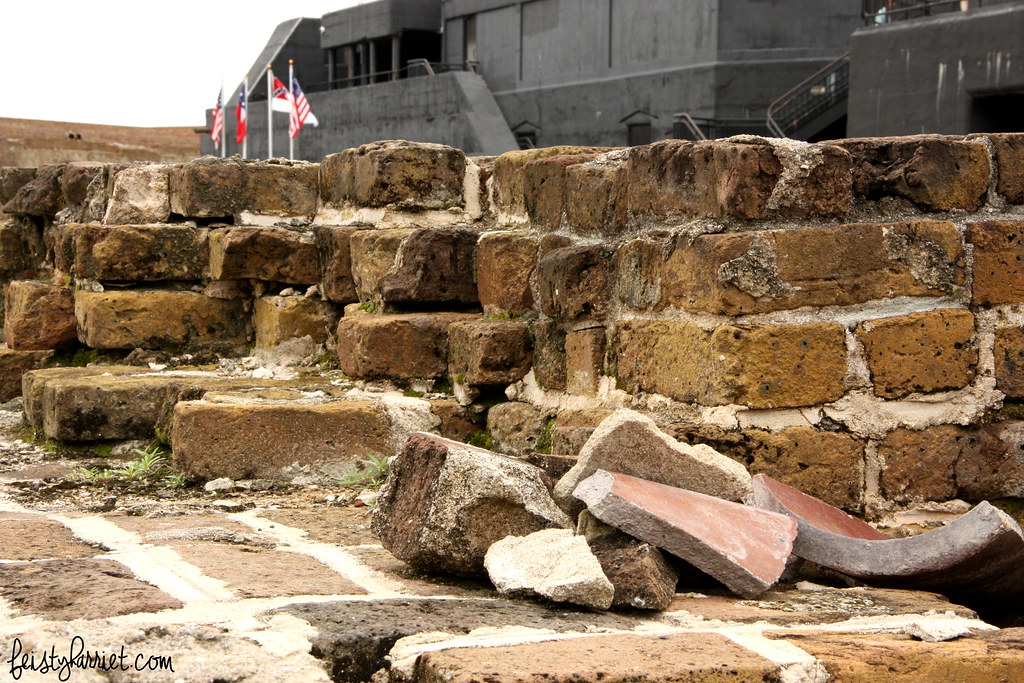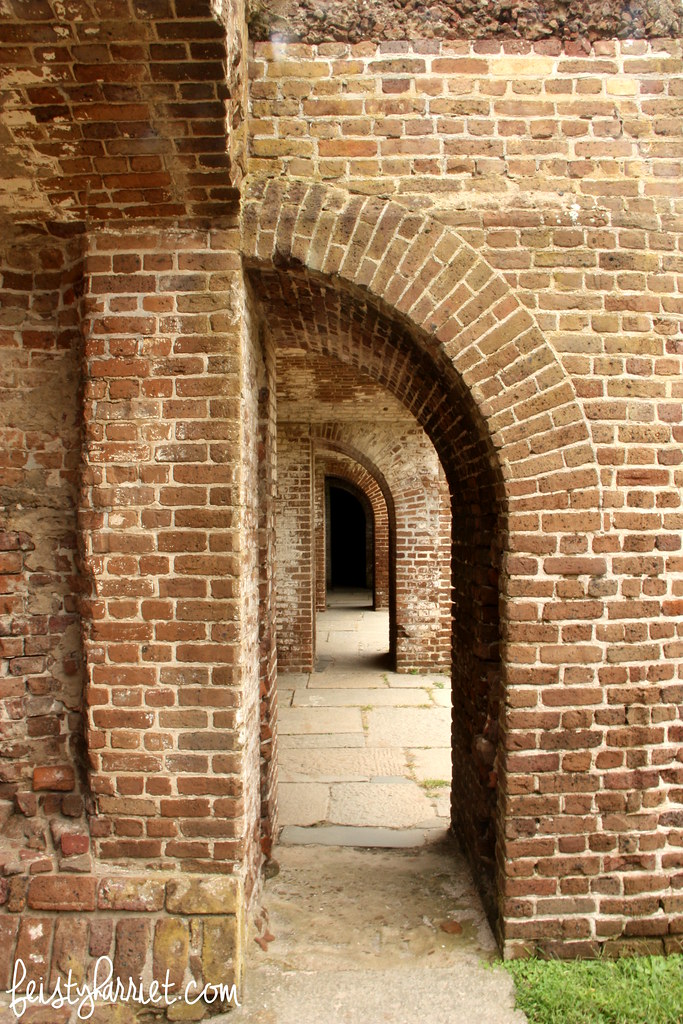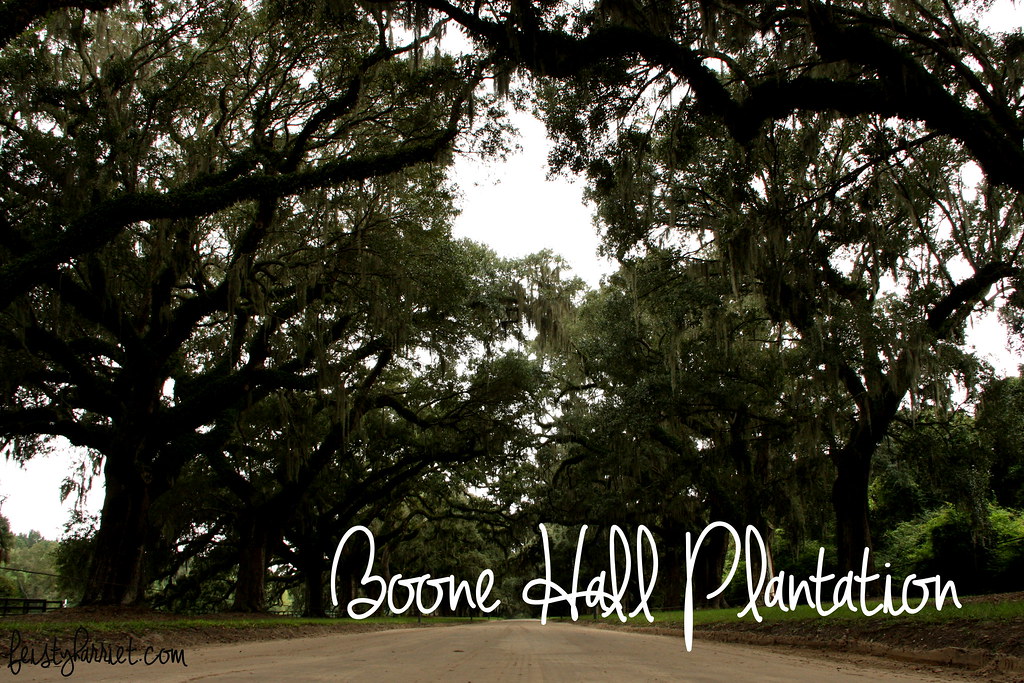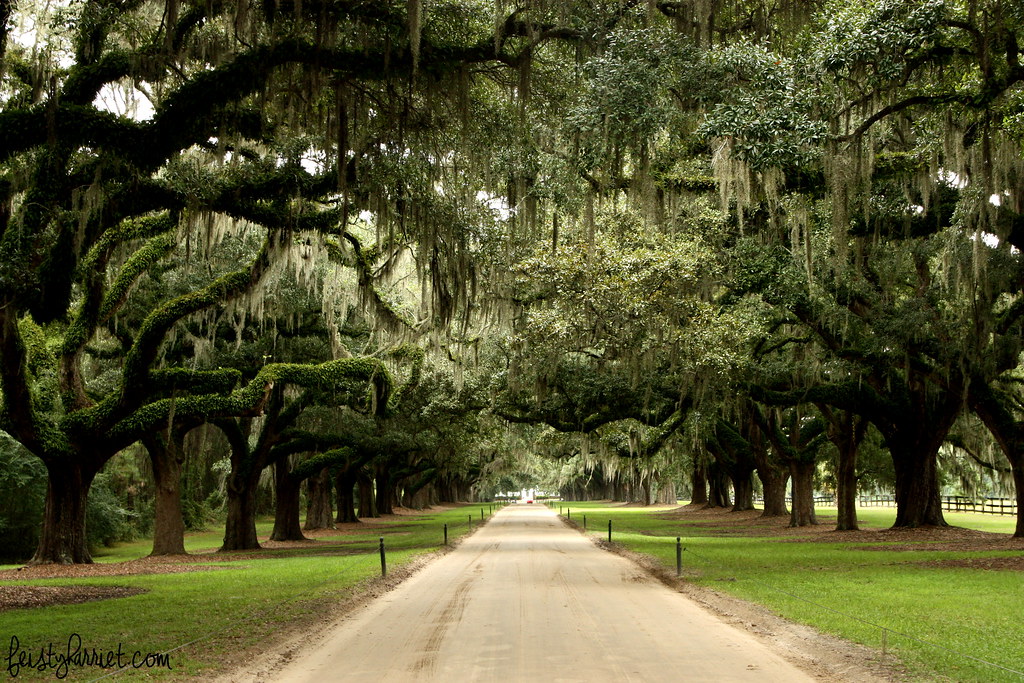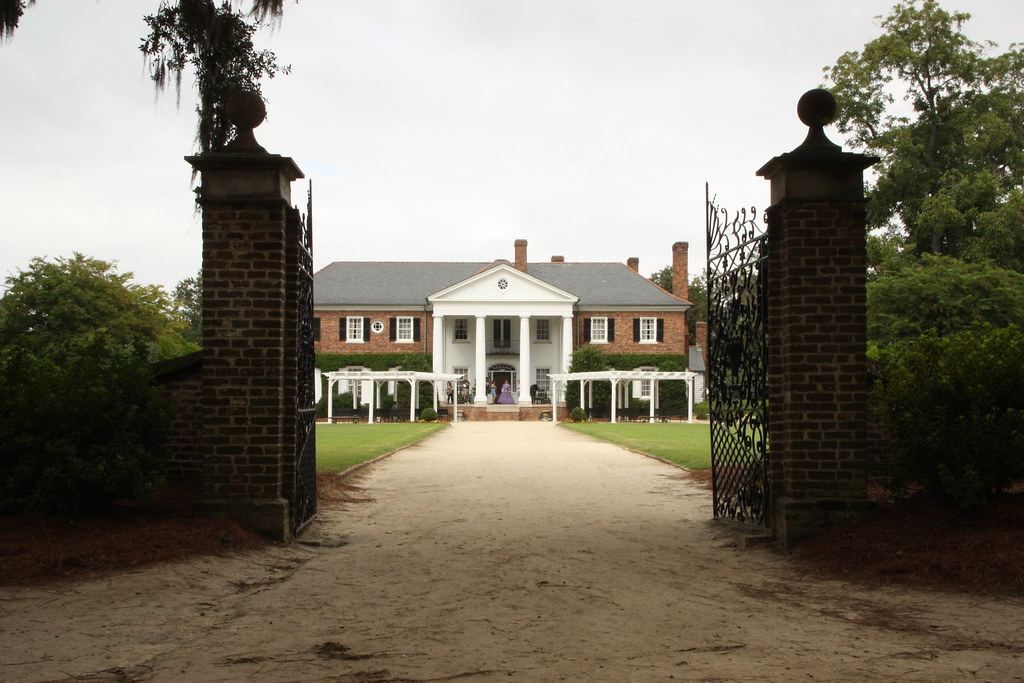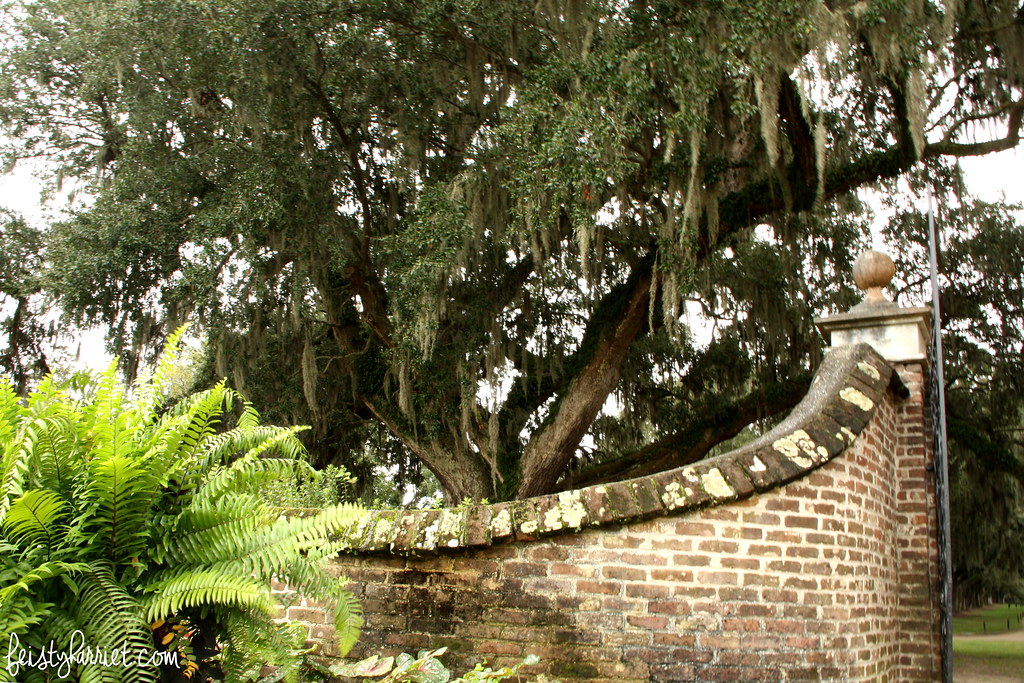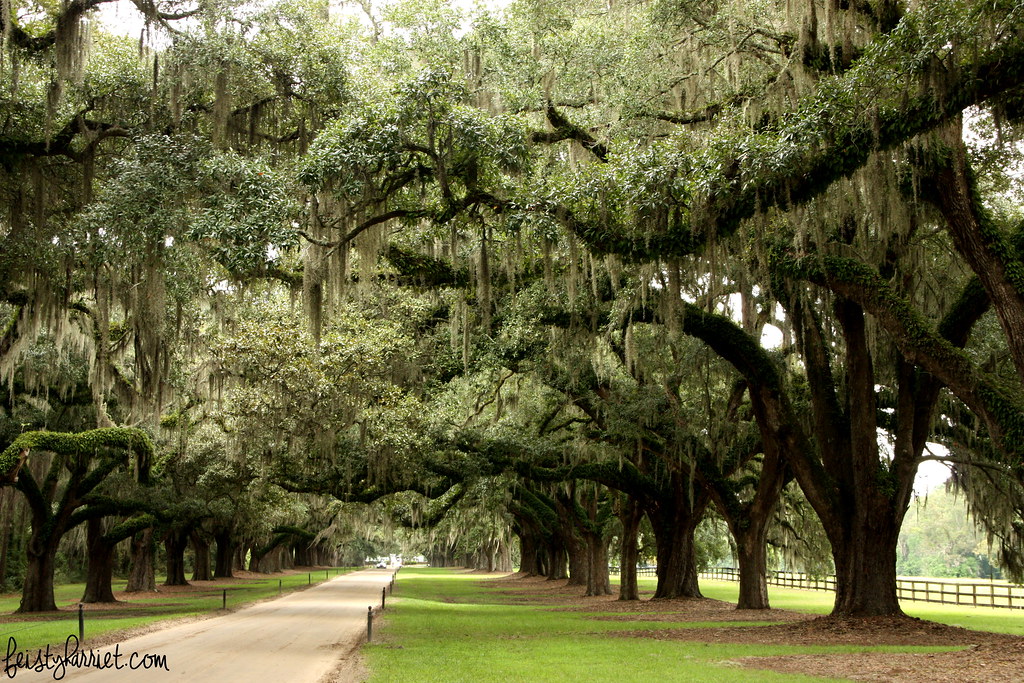Charleston walk around historic downtown, pretty as a postcard. And freaking humid. There were crazy tropical storm warnings starting a few hours after I arrived. I did not feel one bit guilty about holing up in my hotel room after 8:00 pm with some Southern BBQ take-out, AC cranked up, and a book on my knees. Humidity is not my jam, walking around outside in heat and humidity makes me pretty cranky pretty fast. (Seriously, is it ever NOT humid in the south!? Inquiring minds would like to know.)
Rainbow Row, a delightful block in the old historic district that looks like a sorbet buffet. Pink and mint and lavender and sky blue houses, one after another, with gorgeous flower boxes, charming front doors, and enviable iron scroll-work. And no less than three photographers using them as a backdrop for bridal shots.
Wandering around the water front, watching dolphins and turtles play in the harbor, enjoying some gelato and people watching…it was such a wonderful evening. The Palmetto trees (palm trees for us plebian Westerners) lining the walks were swaying, there were fountains everywhere and moss growing on bricks and tree trunks. And, DOLPHINS in the water. I mean, take away the humidity, add my sweetheart and another scoop of gelato and it would have been down right perfect. (Yes, I realize the humidity is essential for the moss to grow everywhere, but man, can the dang weather stay out of my armpits and off my neck!?)
Most people rave about all the delicious things they ate in Charleston, and I had an amazing burrito-thing, some decent gelato, and some pretty great BBQ, but overall I wasn’t there to eat, but to wander. I wandered into restaurants when I got hungry and wandered back out again when I got antsy. I would go back to Charleston, but maybe in February or something when the weather is a little less soggy. I didn’t have enough time in two days to see all the things I wanted to see and photograph.

